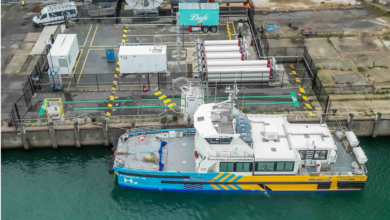Airbus and CFM International to work on hydrogen-powered aircraft engine
The vital part of collaboration is to demonstrate to fly with an engine burning just hydrogen.

Airbus and CFM International agreed to start collaboration on tests of an aircraft engine fuelled by hydrogen.
The partners will work immediately to perform the first tests around the middle of this decade. This demonstration could pave the way for an aircraft that, if all goes according to plan, would carry passengers in the mid-2030s while producing no carbon emissions during flight.
Airbus, the French aerospace manufacturer, first announced its plans to fly on hydrogen in September 2020, dubbing the project ZEROe.
The plane-maker unveiled three concept aircraft that would rely on hydrogen as a primary power source which would help explore and mature the design and layout of the world’s first climate-neutral, zero-emission commercial aircraft, which we aim to put into service by 2035.
CFM International is a 50/50 joint company between GE and Safran Aircraft Engines. The engineers at GE Aviation and Safran Aircraft Engines are modifying a GE Passport jet engine. This includes a complete overhaul of its combustor, fuel system and controls system to make them compatible with liquid hydrogen fuel. The group picked the Passport because of its size, advanced turbomachinery and ability to operate at the appropriate pressures and temperatures for the flight platform.
The modified engine will be mounted on the rear top of the fuselage on an Airbus A380, the world’s largest commercial airliner, powered by its original four engines. But the new configuration will allow the team to test the modified hydrogen-powered engine’s emissions, including contrails, and monitor them separately.
The project aims to demonstrate the technology, and the resulting prototype will later be scalable to work with different sizes of engines and different types of aircraft applications. Ultimately, it could be applied to various designs like Airbus’s three ZEROe concepts, including a turbofan engine, a turboprop and a futuristic blended-wing design.
